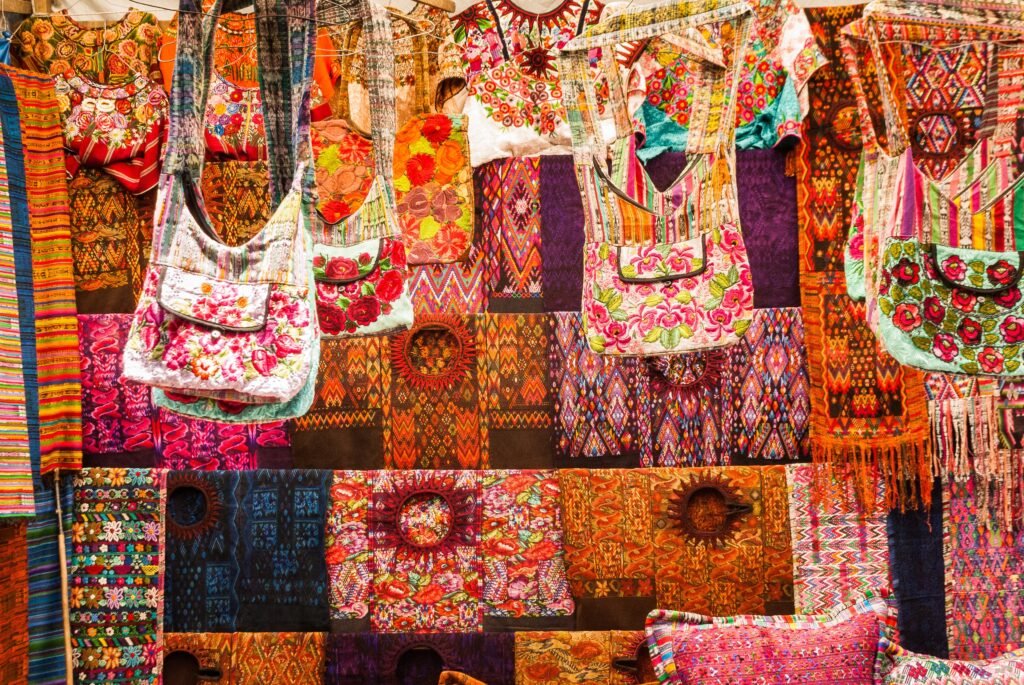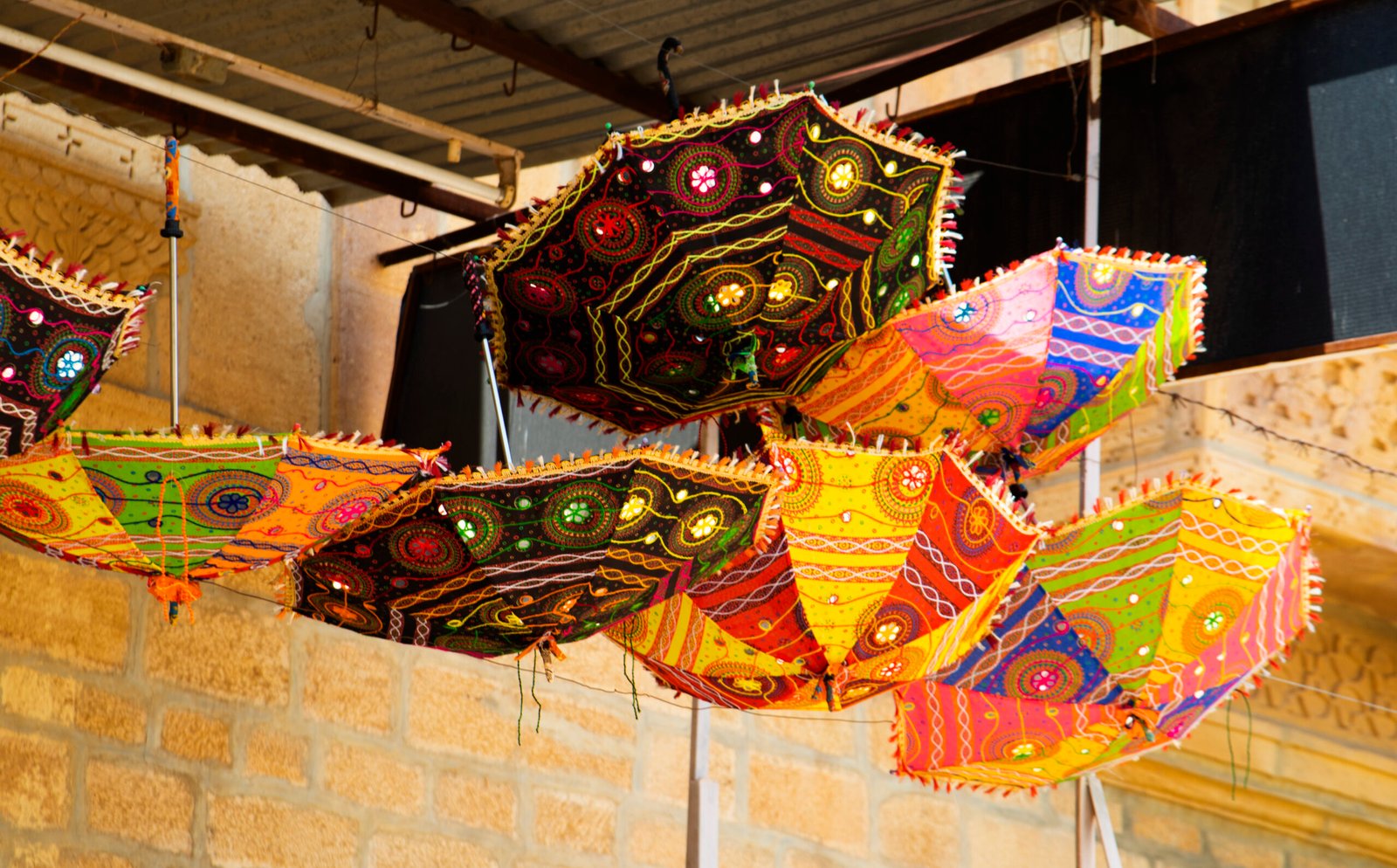Sourcing handmade products from India
In today’s fast-paced world, where mass-produced items dominate the market, there is a burgeoning interest in Indian handmade products, driven by a global desire for authenticity, uniqueness, and cultural connection. This trend is more than just a passing phase; it’s a reflection of a deeper shift in consumer values, where people are increasingly seeking out goods that tell a story, carry a piece of tradition, and are crafted with care.
Indian handmade products are more than just items—they are embodiments of centuries-old traditions, artistic expression, and cultural heritage. Each piece, whether it’s a handwoven textile, intricately carved wooden artifact, or delicately painted pottery, carries with it the essence of India’s diverse cultural landscape. These products are not merely bought; they are collected, cherished, and passed down through generations, serving as tangible connections to the artisans and the rich histories they represent.
The global demand for these handcrafted goods is fueled by a growing awareness of the ethical and sustainable aspects of shopping. Consumers today are more conscious of the impact their purchases have on the world, and Indian handmade products resonate with those who value sustainable practices. The fact that these items are often made using natural, locally sourced materials, and through methods that minimize environmental impact, adds to their appeal.
Moreover, purchasing Indian handmade products supports the livelihoods of millions of artisans, many of whom rely on their craft as their sole source of income. This not only empowers communities but also helps preserve traditional crafts that might otherwise be lost in the age of industrialization. For travelers and global citizens, owning such a piece is akin to owning a slice of India’s soul—authentic, timeless, and unique.
As the world becomes increasingly homogenized, the allure of Indian handmade products grows stronger. They offer something that mass-produced items cannot: a sense of individuality, cultural depth, and a story that is as rich and intricate as the product itself. This rising demand is a testament to the value that global consumers place on authenticity, sustainability, and cultural preservation, making Indian handmade goods not just products, but cherished treasures in an interconnected world.

Why Handmade Gifts Are Considered Superior
In a world awash with mass-produced goods, handmade gifts stand out as beacons of individuality, craftsmanship, and emotional depth. The appeal of handmade items goes far beyond their physical form; they carry with them stories of tradition, skilled artistry, and a deep connection between the maker and the recipient. These qualities make handmade gifts not only unique but also imbued with a value that mass-produced items simply cannot match.
Uniqueness: Every Piece Tells a Story
One of the most compelling reasons handmade gifts are considered superior is their inherent uniqueness. Unlike mass-produced items that roll off assembly lines by the thousands, each handmade item is a one-of-a-kind creation. Artisans pour their creativity, skills, and personal touch into every piece, ensuring that no two items are ever exactly alike. This uniqueness is particularly significant in the context of Indian handmade products, where each region, and often each artisan, has its own distinct style, technique, and cultural influence.
For example, the intricate designs of Madhubani paintings or the meticulous craftsmanship of Pashmina shawls reflect centuries of tradition and artistic evolution. When you gift a handmade item, you’re not just giving a product; you’re giving a piece of history, a slice of culture, and a personal connection that transcends the physical object.
Craftsmanship: A Testament to Skill and Tradition
The craftsmanship behind handmade gifts is another factor that elevates their value. Handmade items are often crafted using techniques passed down through generations, preserving ancient skills that might otherwise be lost. This is particularly true in India, where over 7 million artisans, more than half of whom are women, dedicate their lives to perfecting their crafts.
The meticulous attention to detail that goes into each handmade product is a testament to the artisan’s skill and dedication. Unlike mass-produced goods, which prioritize speed and efficiency, handmade items are created with patience, care, and a deep respect for the craft. This level of craftsmanship not only ensures higher quality but also imbues each item with a soul, making it more than just a product but a work of art.
Emotional Value: A Gift from the Heart
Perhaps the most significant advantage of handmade gifts is the emotional value they carry. Handmade items are often seen as more thoughtful and personal than their mass-produced counterparts. When someone receives a handmade gift, they recognize the time, effort, and care that went into creating it. This creates a deeper emotional connection between the giver and the recipient, making the gift more meaningful and memorable.
In a world where convenience often trumps thoughtfulness, handmade gifts serve as a reminder of the importance of personal connections. They are not just objects; they are expressions of love, care, and appreciation. This emotional resonance is something that mass-produced items, no matter how expensive or trendy, can rarely achieve.
Sustainable and Ethical Choices
Handmade gifts also align with the growing consumer demand for sustainable and ethical products. As highlighted in the article “Sourcing Handmade Products From India And Establishing A Sustainable Supply Chain For Small Businesses,” handmade goods typically have a lower carbon footprint compared to mass-produced items. They are often made from natural, locally sourced materials, and their production methods tend to be more environmentally friendly.
Furthermore, buying handmade products supports small-scale artisans and helps sustain traditional crafts. This is particularly important in countries like India, where the artisan sector is a vital part of the economy and cultural heritage. By choosing handmade gifts, consumers are not only making a sustainable choice but also contributing to the preservation of cultural traditions and the livelihoods of artisans.
High-Demand Indian Handmade Products and Sourcing Strategies
As global consumers increasingly seek out products with authenticity, cultural depth, and ethical production, Indian handmade goods have surged in popularity. These items, known for their intricate craftsmanship and unique cultural significance, cater to a growing market that values sustainability, tradition, and quality. In this section, we’ll explore the types of handmade products that are currently in high demand, particularly those sourced from India, and discuss the best tools and platforms for sourcing these products effectively.
High-Demand Indian Handmade Products
Indian handmade products cover a broad spectrum, from textiles and jewelry to home decor and personal accessories. These items are appealing not only for their aesthetic value but also for the stories and traditions they represent. Here are some categories of Indian handmade products that are particularly popular among global consumers:
- Textiles and Fabrics: Indian textiles, such as handwoven sarees, block-printed fabrics, and intricate embroidery, are highly sought after. The diversity of weaving techniques across different regions, such as Banarasi silk from Varanasi and Pashmina from Kashmir, makes these textiles unique and appealing to those who appreciate fine craftsmanship.
- Jewelry: Handmade jewelry from India, often crafted with traditional techniques, is another category in high demand. Kundan, Meenakari, and Temple jewelry styles are particularly popular for their intricate designs and cultural significance. These pieces often serve as both fashion statements and cultural artifacts.
- Home Decor: Indian handmade home decor items, such as rugs, pottery, and wooden carvings, are valued for their ability to bring a touch of exoticism and tradition into modern homes. Items like hand-painted ceramic pottery from Jaipur or brassware from Moradabad are examples of products that blend utility with artistic expression.
- Handicrafts and Artifacts: Artifacts like Madhubani paintings, Warli art, and Lippan art (a traditional mural craft) are favored by collectors and those interested in unique, handcrafted art pieces. These items are not just decorative but are also steeped in cultural and religious significance.
- Personal Accessories: Accessories such as handmade leather bags, footwear, and scarves are appreciated for their durability, style, and the personal touch they carry. These products are often crafted using eco-friendly materials, adding to their appeal among sustainability-conscious consumers.
Tools and Platforms for Sourcing Indian Handmade Products
Sourcing Indian handmade products involves navigating a complex landscape of suppliers, artisans, and logistics. To ensure the authenticity and quality of the products, as well as to manage logistics efficiently, businesses can leverage several tools and platforms. Here’s a look at some of the best options available:
- Online Marketplaces: Platforms like Etsy, Amazon Handmade, and iCraft provide a marketplace where businesses can source handmade products directly from artisans. These platforms are excellent for discovering unique items and establishing direct relationships with suppliers.
- Sourcing Tools: Tools like Helium 10 (for Amazon sellers) and Jungle Scout can be instrumental in identifying high-demand products and analyzing market trends. These tools allow businesses to research keywords, track competitor pricing, and find products with high sales potential.
- Trade Shows and Exhibitions: Attending trade shows like the India International Trade Fair or regional craft exhibitions is a great way to meet artisans in person, evaluate the quality of their work, and build relationships that can lead to long-term sourcing partnerships.
- Supply Chain Management Platforms: Tools like TradeIndia and Indiamart help streamline the sourcing process by connecting businesses with a wide range of suppliers. These platforms often include features for managing logistics, verifying supplier credentials, and ensuring that products meet quality standards.
Quality Assurance Services: Given the unorganized nature of the handicraft sector in India, using quality assurance services like SGS or Bureau Veritas can help ensure that sourced products meet the required standards. These services can conduct on-site inspections, lab testing, and certification processes to verify product quality and authenticity.
The Best Marketplaces for Selling Handmade Items

Handmade items, with their unique charm and cultural significance, have captured the hearts of consumers worldwide. As more people seek out products that are not only aesthetically pleasing but also carry stories of tradition and craftsmanship, the demand for handmade goods continues to rise. For sellers, identifying the right marketplaces—both online and offline—is crucial to reaching the right audience and maximizing sales. In this section, we’ll explore the top platforms where handmade items sell best, including specialized platforms that cater to artisan products.
Online Marketplaces: Reaching a Global Audience
The internet has revolutionized the way handmade products are bought and sold. Online marketplaces offer artisans and sellers an unparalleled opportunity to reach a global audience, often with minimal upfront investment. Here are some of the top online platforms for selling handmade items:
- Etsy: Arguably the most popular online marketplace for handmade goods, Etsy has established itself as a go-to platform for consumers seeking unique, handcrafted items. With a focus on artisanal products, Etsy provides sellers with a global customer base and tools for managing their shop, promoting products, and analyzing sales data. The platform’s emphasis on community and craftsmanship makes it an ideal space for artisans who want to build a brand around their handmade creations.
Check here for How to open an Etsy shop in easy steps. - Amazon Handmade: Leveraging the vast reach of Amazon, Amazon Handmade is a specialized section of the e-commerce giant dedicated to handcrafted products. This platform is ideal for sellers looking to tap into Amazon’s massive customer base while maintaining the authenticity of their handmade goods. Amazon Handmade offers the logistical support and customer service that Amazon is known for, making it a robust option for serious sellers.
Click here for Amazon Handmade - iCraft: iCraft is a more niche platform, focusing exclusively on handmade items. It’s particularly appealing to artisans who want to avoid the competition from mass-produced products that can be found on other platforms. iCraft’s curated approach means that the quality of products is high, and the buyers are often more discerning, looking specifically for handmade and unique items.
- Folksy: Targeted primarily at the UK market, Folksy is a platform that champions British crafters and makers. It’s a great option for artisans who produce goods that align with British tastes or those who are looking to establish a presence in the UK market. Folksy’s focus on local talent and craftsmanship provides sellers with a supportive community and a dedicated audience.
- Shopify: While not exclusively a marketplace, Shopify allows artisans to create their own online stores, giving them complete control over branding, pricing, and customer experience. This platform is ideal for those who want to build a direct relationship with their customers and grow their brand independently. Shopify also integrates with various social media platforms and online marketplaces, offering flexibility in reaching different audiences.
Click here to open a Shopify store
Offline Marketplaces: The Power of Personal Connection
While online platforms offer convenience and reach, offline marketplaces remain powerful venues for selling handmade goods, particularly because they allow for personal interaction and immediate feedback. Here are some of the best offline avenues for selling handmade products:
- Local Craft Fairs and Markets: Participating in local craft fairs and markets is a time-tested way to sell handmade goods. These venues provide artisans with direct access to customers who appreciate and seek out handcrafted items. The face-to-face interaction allows sellers to tell the story behind their products, creating a personal connection that can lead to repeat business. Additionally, local markets often attract tourists, providing an opportunity to reach a broader audience.
- Artisan Collectives and Co-ops: Joining an artisan collective or cooperative can offer numerous benefits, including shared resources, collaborative marketing efforts, and access to a wider customer base. Collectives often operate physical stores or pop-up shops, where members can sell their goods. These groups provide a supportive environment and can be especially beneficial for artisans who are just starting out.
- Boutique Stores: Partnering with boutique stores that align with the artisan’s brand can be an excellent way to reach a targeted audience. Many boutique stores specialize in carrying unique, high-quality handmade items and are always on the lookout for new products to offer their customers. This approach not only gives artisans access to established customer bases but also enhances their brand’s prestige.
- Pop-Up Shops: Pop-up shops have become increasingly popular as a way to create a buzz and drive sales in a short period. These temporary retail spaces allow artisans to showcase their products in high-traffic areas, often without the long-term commitment of a traditional retail lease. Pop-up shops can be particularly effective for testing new markets or launching new product lines.
Specialized Platforms: Catering to the Artisan Community
In addition to general marketplaces, there are specialized platforms that cater specifically to the artisan community. These platforms often offer additional support and services tailored to the needs of handmade product sellers:
- UncommonGoods: UncommonGoods is a curated online marketplace that focuses on unique, creatively designed products. The platform is selective about the products it features, making it an ideal venue for high-quality, innovative handmade items. UncommonGoods also emphasizes sustainability and ethical sourcing, aligning with the values of many artisans.
- ArtFire: ArtFire is another platform dedicated to handmade goods, vintage items, and craft supplies. It offers a community-driven marketplace where artisans can sell their products alongside like-minded creators. ArtFire provides tools for managing inventory, marketing, and customer interactions, making it a comprehensive platform for artisans.
- Made Trade: Made Trade is an ethical online marketplace that features handmade, fair trade, and sustainable products. The platform is committed to supporting artisans and small businesses that prioritize eco-friendly practices and fair labor. Made Trade’s focus on transparency and ethical sourcing makes it a great fit for artisans who are passionate about sustainability
Key Takeaways on Sourcing and Selling Indian Handmade Products
Sourcing and selling Indian handmade products is not just a business venture; it’s a commitment to preserving cultural heritage, supporting artisan communities, and offering consumers products that carry a unique story. The key takeaways from exploring this market emphasize the profound impact of these goods on both sellers and buyers.
First, Indian handmade products are exceptional in their uniqueness, craftsmanship, and cultural significance. These items are not merely objects but are infused with the history, traditions, and personal touch of the artisans who create them. This authenticity resonates deeply with consumers who are increasingly seeking products that stand out from mass-produced goods.
Supporting artisans through the sale of these products contributes to the sustainability of traditional crafts and the economic empowerment of communities. Many of India’s artisans, particularly women, rely on their craft as their primary source of income. By sourcing and selling these products, businesses can play a crucial role in sustaining these communities and ensuring that ancient crafts continue to thrive in a modern world.
Moreover, the rise of ethical consumerism has made the market for handmade goods even more attractive. Consumers are now more aware of the environmental and social impact of their purchases, and they are drawn to products that align with their values. Handmade items, often produced using sustainable materials and methods, meet this demand, making them a preferred choice for the conscious consumer.
In conclusion, sourcing and selling Indian handmade products offer a unique opportunity to connect consumers with culturally rich, ethically produced goods while supporting the artisans who create them. The success of this market hinges on recognizing the value of these products and using the right platforms and strategies to reach an audience that appreciates their beauty, authenticity, and cultural significance.











